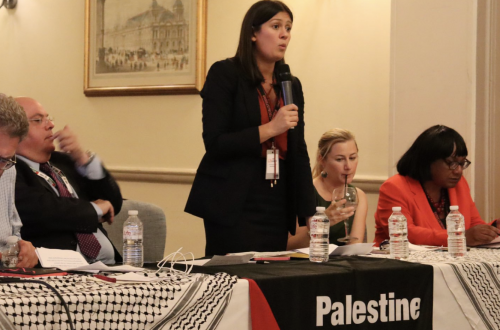This is a cross-post from Jacobinism
Reproduced below is an extract from a much longer piece which you can read in full here.
So the question of choice presents a problem for liberal universalists: does the right to freely adopt the burqa in the first instance trump the need to protect and emancipate – if necessary by recourse to State intervention – those compelled to wear it?
Kenan Malik had a stab at addressing this question when he argued against a State ban on the burqa in the New Humanist. Like Cohen, Malik is no relativist. From Fatwa to Jihad is a lucid and thoughtful examination of the West’s response to Islamic fundamentalism in the wake of the Satanic Verses affair. But it is also a sturdy defence of Enlightenment universalism from the pincer threat of Western relativism and reactionary Islamism. Malik shares Nick Cohen’s dismay at the concessions made by open societies to theocratic fascism in the name of fear and sensitivity.
But, unlike Cohen, Malik stutters when it comes to the burqa.
[I]s a ban not necessary to protect women from being forced to wear the burqa? In countries such as Saudi Arabia or Yemen women have little choice but to cover up their face. That in itself is a good reason for liberal societies not to impose coercive dress codes. In democratic countries, the law already protects citizens from being harmed or coerced by others. It should go no further, especially as evidence suggests that in Europe most women wear the burqa of their own volition.
This pretzel of an argument is completely foreign to the clear-minded reasoning of his book, and in its convoluted logic I detect dissonance. He asks what is to be done about those coerced in free societies. He then shifts the argument to the treatment of women in Gulf theocracies, before returning – not to those forced to wear the burqa whose fate is supposed to be under discussion – but to those he fears may be asked by the State to remove it.
The additional argument that laws already exist in democracies to protect citizens from coercion sidesteps precisely what is at issue: that some Muslim women are being coerced in spite of these laws and in spite of others supposed to guarantee gender equality. Who speaks for them?
Contrast Malik’s reasoning to that of American feminist and anti-theist Ophelia Benson, who back in July 2009, told the New Statesman:
One reason I don’t flat-out oppose [a ban] is because community pressure can force other women and girls to wear the hijab or the burqa, and from that point of view a ban is like any other law that creates a level playing field. If no one can wear the burqa on the street, then no one will be forced to wear it on the street. This is hard on women and girls who want to wear it but good for women and girls who don’t want to. If I have to choose which should be helped, I choose the latter.
Malik’s position, conversely, requires him to choose the former and abandon the latter. There is no need to divert the discussion into the Arabian peninsular when debating the human rights of women in European democracies. But having done so, the equivalence he asserts is a false one. A theocratic state imposing a uniform and dehumanising dress code on half of its population in the name of gender segregation and female subjugation is not comparable to a democratic state which proscribes a single item of clothing in the name of gender equality and female emancipation. To suggest that it is paddles into the very relativist swamp Malik’s reasoning is intended to avoid.


